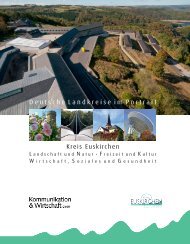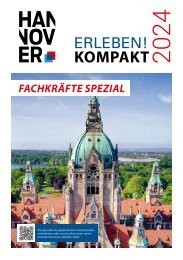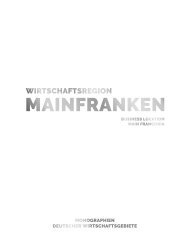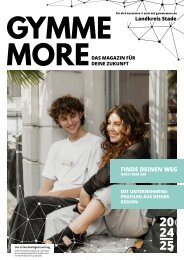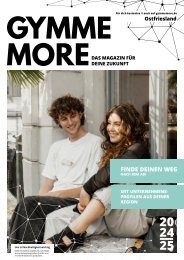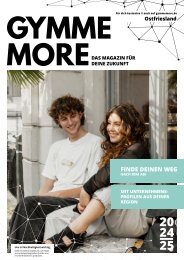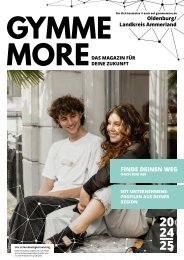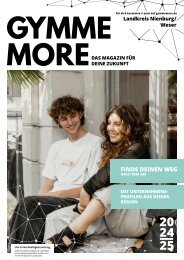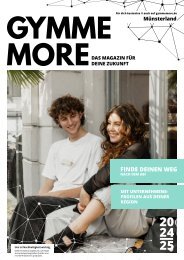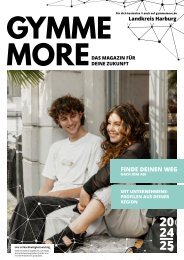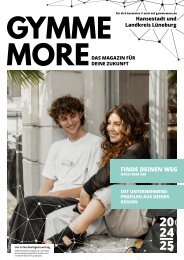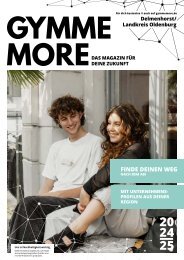Agrar- und Ernährungswirtschaft Westmecklenburg 2020
Erfolgreiche ePaper selbst erstellen
Machen Sie aus Ihren PDF Publikationen ein blätterbares Flipbook mit unserer einzigartigen Google optimierten e-Paper Software.
Fisch | Fish 25<br />
Foto: Henrik Matzen<br />
Das Welsfleisch ist praktisch grätenfrei <strong>und</strong> vielseitig zuzubereiten.<br />
The catfish is practically boneless and easy to prepare in many different ways.<br />
Ein halbes Jahr lang wachsen die Fische heran, bis<br />
sie ihr Schlachtgewicht von 1,5 Kilogramm erreicht<br />
haben. Damit sie dann nicht den typischen Welsgeschmack<br />
tragen, der von Stoffwechselpro zessen<br />
durch die Nahrungsaufnahme herrührt, nüchtern<br />
sie vor der Entnahme einige Zeit in klarem Brunnenwasser<br />
aus. Das gebrauchte Wasser wird<br />
durch die hauseigene Filteranlage aufbereitet <strong>und</strong><br />
bleibt im Kreislaufsystem. Nur ein geringer Teil<br />
dient zusätzlich für die Bewässerung der angrenzenden<br />
Felder. Dort baut das Unternehmen Futter<br />
für den Milchviehbetrieb <strong>und</strong> Mais für die Biogasanlage<br />
an. Der erzeugte Strom wird ins öffentliche<br />
Netz eingespeist <strong>und</strong> versorgt mehr als 2000<br />
Haushalte. Die erzeugte Wärme versorgt verschiedene<br />
Einrichtungen im Dorf <strong>und</strong> sorgt dafür, dass<br />
in der Fischhalle eine konstante Luft- <strong>und</strong> Wassertemperatur<br />
von 28 Grad Celsius herrscht, bei der<br />
die Fische sich wohlfühlen.<br />
Insofern ist die Aquakultur in Sukow auch ein<br />
positives Beispiel dafür, wie sich die Produktion<br />
von hochwertigen Lebensmitteln in einen<br />
nachhaltigen Energiekreislauf einfügen kann<br />
<strong>und</strong> einen positiven ökologischen Fußabdruck<br />
hinterlässt.<br />
the heads and backs of the animals keep coming<br />
into view. “The fish then breath in the air”, explains<br />
Catharina Haenning. “This also means it’s less<br />
stressful when we have to move them or take<br />
them out of the basin to be slaughtered.”<br />
The fish grow for six months until they reach<br />
their slaughtering weight of 1.5 kilos. Before they<br />
are taken out for slaughtering, they spend some<br />
time in clear well water to lose the typical catfish<br />
taste caused by metabolic processes when they<br />
consume food. The used water is filtered in the<br />
company’s own self-contained circulation system.<br />
Only a small amount of water is used to irrigate<br />
the adjoining fields, where the company grows<br />
fodder for the cattle and corn for the biogas plant.<br />
The electricity generated by the plant is fed<br />
into the public grid and provides power for more<br />
than 2,000 households. The heat generated in<br />
the process supplies various facilities in the village<br />
and keeps the fish hall at a constant air and water<br />
temperature of 28 degrees Celsius, which is the<br />
feel-good temperature for the fish.<br />
Aquaculture in Sukow is thus a positive example<br />
for integrating top quality food production in a<br />
sustainable energy cycle with a positive carbon<br />
footprint.




